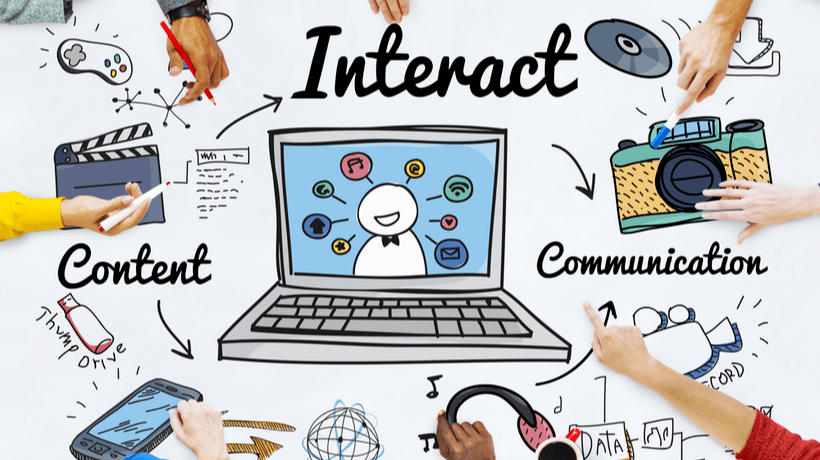Interactive Learning Platforms
The learning landscape transforms daily with new systems, skills, and tools. The only way to stay ahead is by embracing change, expanding your prospects, and empowering employees to adopt new technologies. That's where interactive learning platforms emerge—dynamic solutions revolutionizing how companies prepare teams for the future using adaptive learning. These robust solutions empower organizations to deliver a learning experience that is personalized, engaging, and scalable, ultimately unlocking the full potential of their workforce and driving business success. As technology accelerates and market demands shift, organizations that leverage these tools gain a measurable competitive edge.
The Evolution Of Corporate Training
Static, one-size-fits-all training programs are becoming a thing of the past. The best solutions should cater to specific learners and organizational goals to support evolving needs. Interactive learning platforms help meet this need with features such as real-time assessments, immersive simulations, and peer collaboration. Adaptive learning is central to many of these platforms, which deploy AI to personalize content according to a learner's pace, strengths, and gaps [1].
There's a surging demand for such tools. According to a 2025 Statista report, the global online learning platforms market is projected to grow at a compound annual growth rate (CAGR) of 5.81% during 2025-2029 and reach $75.52 billion [2]. This surge illustrates how essential these platforms have been to businesses navigating a highly competitive space. As industries adapt, interactive learning platforms offer the flexibility and accuracy required to keep workforces sharp and up-to-date.
Boosting Employee Performance And Engagement
Content engagement is a cornerstone of successful training, but old-school techniques often fall flat. One-way lectures or old eLearning ideas fail to hold employee attention or drive meaningful outcomes. Interactive learning platforms turn this notion upside down: gamification, interactive videos, hands-on exercises, and an experimental approach to learning ensure that learning is active and fun. Most learners say they'd be more productive if training felt like a game, increasing knowledge retention rates.
This helps them have a bright future for the business, enabling faster learning, better skill application, and measurable performance outcomes. Aside from performance, these platforms improve employee satisfaction. Modern learning tools improve employees’ loyalty towards the company, with many stating they are more loyal to firms investing in their career growth. Delivering interactive, engaging experiences helps businesses to retain the best talent—a key to staying competitive.
Addressing The Skills Gap With Precision
The skills gap continues to be a longstanding barrier to businesses, and emerging areas such as AI, cybersecurity, and sustainability will require ongoing upskilling. Adaptive learning through interactive learning platforms addresses this challenge squarely by providing customized learning paths that adjust based on each employee's progress. For example, suppose a sales manager performs well in negotiation as a course segment but falters at data-driven decision-making. In that case, the solution adapts to offer greater emphasis on the latter to reduce redundancy and time wastage. This level of precision matters. A company whose upskilling programs, reinforced by adaptive tools, provided thousands of employees with training in cloud computing and Machine Learning, kept it ahead of its competitors.
Cutting Costs Without Compromising Quality
Training budgets are tight, especially for small-to-medium enterprises. In-person approaches incur significant expenses—travel, venues, instructors—but have limited scalability. Interactive learning platforms remove these two barriers, offering high-impact training at a lower price point.
Neither do businesses need logistical nightmares to deploy consistent, high-quality content to a few new hires or a global workforce. A report by Grand View Research notes that the eLearning services market is forecasted to grow at 19.0% CAGR to reach $375 billion by 2030, propelled by cost-efficiency and accessibility factors. For companies, this translates to new funds available for investment in innovation and growth—hallmarks of competitiveness.
Enabling Agility And Innovation
In highly competitive businesses, rapid flexibility is the only core competence. One way to fulfill that is through interactive learning platforms, which create environments for employees to experiment and practice skills without real-world stakes. For example, Virtual Reality simulations enable manufacturing employees to rehearse equipment repairs, while role-playing modules allow customer service teams to hone their next moves.
Various learning platforms focus on lifelong learning, allowing employees to explore new concepts and navigate an innovation-driven culture, keeping organizations quick-footed. Agility also shines in compliance. Interactive modules ensure employees are always up to date about regulations to reduce risks and bolster a company's position in the market—and all of it is trackable.
Conclusion
Adaptive learning in interactive learning platforms is reinventing the way businesses and the workforce will be trained for the future. They help improve engagement, reduce skills gaps, lower costs, and stimulate innovation while creating an agile and competitive workforce. Companies that leverage these platforms will keep up with change and drive it, strengthening their position within the upper level of their respective industries. Interactive learning platforms are the golden ticket to keeping up with the latest trends in a world where it is necessary to remain competitive.
References:
[1] The Role of Adaptive learning Strategies in Driving Human Capital Transformation
[2] Online Learning Platforms - Worldwide








